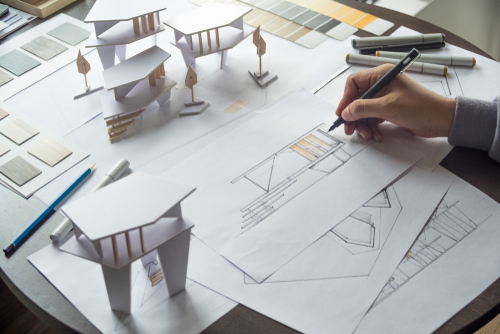Excellent service and products, Perfect customer service, the best
Best architects in Rest in Peace, Gauteng
Top architects near you
Browse the best architect experts and compare ratings and reviews.
**Desire:** Imagine a seamless demolition process that not only clears your space but also puts money back into your pocket through the sale of high-quality scrapped materials. Our offerings include: - Aluminum Wire for Sale - Used Rail Scrap HMS - Copper Scrap - Copper Cathodes - Copper Wire Scrap...
Hire the best architect
Search Uptasker for the best architect
What can an architect help with?
Some of us are lucky enough to have the means of building our own homes to our specific design and requirements, making them unique and ideally suited to our individual lifestyles. Having ideas is one thing, but putting everything together to create a house that not only looks good but works efficiently is a specialised art, incorporating factors such as design style, structural considerations, safety aspects, utilities, temperature control and traffic flow throughout the building, amongst others. This is where an architect’s skills, experience and knowledge are called for. Alternatively, you may have a smaller project, such as maximising space in your existing home by building an extension, upper floor or adding a garage, and an architect will be able to assist you by designing a space which is both functional and fits into the style of the existing building.
What exactly does an architect do?
Architects are the specialists behind every commercial, corporate or residential building, including factories, hospitals, clinics, shopping centres, hotels, religious structures, schools, universities, residential developments, office blocks and private homes. The scope of their abilities extends into every sphere of our lives, including restoration work on old buildings and renovation of existing structures. They are also tasked with the design of extensions and additions to existing buildings. Architects do not just design buildings which serve their purpose on a safe and practical level, but are also responsible for the unique and often innovative style of every structure, be it an individual stand-alone house or a complex which incorporates a number of different designs which form a cohesive and complementary whole. The architect is often responsible, with an interior designer, for the appearance of the interior of the building, choosing and blending colours, furniture, wall and floor tiles, lighting and fixtures as part of the overall design of the space.
Architects are multi-faceted and adaptable
Architects are required to make the best use of the land on which the building is to be erected, and may have to design a house around natural barriers such as rocky slopes, long narrow plots, deeply sloping areas, old or large trees which the homeowner does not want to remove, and restrictions on the height of the building to be erected, for instance, by not being allowed to build a two storey building so as not to obscure the view from other homes. He must also take into account the environmental impact of the building on the immediate area, the initial and ongoing cost estimations and revisions, budgetary control, liaison and project control of the various specialists involved in the construction, and adherence as far as possible to completion dates.
Adherence to building regulations
Architects are not simply artists who have the ability to create unique buildings to fit every client’s vision and requirements, but are highly qualified specialists with exceptional technical and mathematical skills. Any building, be it private, commercial, corporate or public, has to satisfy and comply with the building regulations and planning laws of the province or town in which it is situated, so the architect has to be fully aware of and adhere to such legalities.
Architects design and adapt according to natural elements
On large construction projects and high rise buildings, for instance, the architect has to work with civil or structural engineers to address and resolve technical issues posed by the design, which may, in extreme cases, involve adaptations to the original concept. For example, high-rise buildings have to be able to withstand the impact of extreme weather changes and high winds on the structure.
Buildings which incorporate a great deal of glass in their design have to allow for practical considerations such as outer window cleaning, reflection off the glass which may affect the surrounding areas and buildings and overall impact on controlling the internal temperature of the building.
Project control and diversity are part of the job
An architect does not work in isolation. He forms part of a group of trained and skilled specialists whose input and contribution is vital to the completed project. Even with individual structures such as private homes, the architect works with specialists such as builders, bricklayers, tilers, plumbers, electricians, roofing contractors, carpenters and associated contractors, ensuring that the building work continues on time and within the specified budget. He may also be responsible for working with an interior designer who will style the interior space to complement the general theme of the design. This may form part of the entirety of the project, and helps the client to visualise the finished construction. The client is, of course, the individual who makes the final decision, and it is up to the architect to work closely with the client to achieve the desired outcome.
What formal qualifications does an architect need?
Architects are highly qualified
Architects must have a degree in architecture, which is a five-year education and training degree which exposes students to different types of structures, after which the aspiring architect has to pass the licensure examination, before being able to practice as an architect.
How to find the right architect
Check their online ratings and client reviews
Architects are a specialised sector of the workforce who do not always widely advertise their services in the general media. Some of them will advertise in home catalogues, architectural magazines and digests, the Yellow Pages and through the internet. Sites such as Uptasker are a valuable and informative resource as online reviews can be found immediately. Client testimonials can never be under-estimated, as these will provide you with assurances regarding the scope, innovation and professionalism of the architect, as well as details such as attention to detail, commitment and adherence to the client’s vision, and completing the project on time. Of course, it helps when you have an idea of what you want, but if you need inspiration, provide the architect with pictures from magazines or brochures which appeal to you, explain your thoughts and trust his vision to bring the project to life. Your first choice will probably always be word-of-mouth referrals and testimonials, together with upfront and honest verbal reviews from previous clients, but this is not always possible.
Get detailed quotes before agreeing any project
An architect’s work does not end at his own drawing board or pc, but necessarily involves working with and project-managing other specialists involved in the building work. He will keep track of expenditure and advise you if the work is going over-budget or if there are problems which will prevent timely completion of the job. A contingency factor should be built into any budget, allowing for unplanned delays, non-availability of particular items such as specific tiles or hardware which will then entail a review of costings, re-planning the work schedules of different contractors, and bringing the project to finalisation within an acceptable timescale. An architect has to think on his feet at all times, re-scheduling and amending existing plans and designs when unexpected delays and problems arise.
Top architect tips

Architects are an invaluable asset in the design and layout of individual buildings and complexes, across all sectors of our lives. They enrich our surroundings through innovative and carefully designed buildings which incorporate interest, individuality, functionality, safety and beauty. They have the skills and experience to re-purpose and revitalise both existing and historical buildings to either blend them into their surroundings or make them stand out as unique and eye-catching structures which reflect the individuality of their owners. They are the ultimate professionals in design, visualisation and project management. For more tips, see our architect articles.
Read Architect articles


